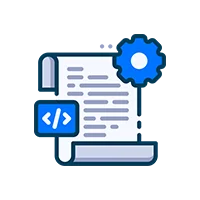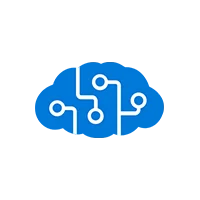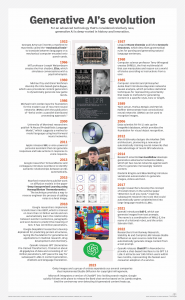In today’s technologically advanced world, organizations are constantly seeking ways to enhance operational efficiency and streamline business processes. Hyperautomation has emerged as a powerful solution to achieve these goals. In this comprehensive guide, we will explore hyperautomation, its benefits, key elements, and address concerns about its impact on human employment. So, let’s dive in and discover how hyperautomation is revolutionizing operational efficiency.
What is hyper-automation?
To understand it better, firstly, we all should know about this newly emerged term “Hyper-automation”. Hyperautomation is an advanced approach that combines robotic process automation (RPA), artificial intelligence (AI), machine learning (ML), and other technologies to automate and streamline business processes across the organization. It goes beyond traditional automation by leveraging AI and ML to analyze data, make intelligent decisions, and continuously improve processes. Hyper-automation aims to automate repetitive tasks, optimize workflows, and enhance overall operational efficiency.
Getting started with hyper-automation:
To embark on a hyper automation journey, organizations should follow these key steps:
Process Identification: To start, identify the processes in your organization that are ready for automation. Look for time-consuming, manual processes that can be streamlined, and repetitive tasks and large amounts of data.
Evaluate Readiness: Assess your organization’s readiness for hyper-automation. Make sure you have the required infrastructure, data accessibility, and stakeholder support.
Define Goals: Clearly define your objectives and goals for hyper-automation. Figure out what it is you want to accomplish, whether it be lowering expenses, increasing precision, or better serving customers.
Choose the Right Tools: Select appropriate hyper-automation tools and platforms that align with your organization’s needs and goals. Consider issues like scalability, integration, and usability.
Developing a Roadmap: Create a roadmap for implementing hyper-automation. Define the timeline, prioritize the automation of processes, and develop a plan for employee training and upskilling.
Benefits of hyper-automation
Hyper-automation offers several significant benefits for organizations, including:
Increased Efficiency: By automating repetitive tasks, hyper-automation frees up employees’ time so they can concentrate on more strategic and value-added activities. This leads to improved operational efficiency and productivity.
Enhanced Accuracy: Automation reduces the likelihood of human errors, leading to increased accuracy and improved data quality. This, in turn, minimizes costly mistakes and rework.
Faster Decision-Making: Hyper-automation leverages AI and ML to analyze vast amounts of data and provide actionable insights in real-time. This enables faster and more informed decision-making across the organization.
Improved Customer Experience: By automating and optimizing processes, organizations can deliver faster and more consistent customer experiences. This leads to higher customer satisfaction and loyalty.
Cost Savings: Automation eliminates the need for manual intervention in repetitive tasks, reducing labor costs and minimizing operational expenses. It also enables organizations to achieve more with existing resources.
Key elements of hyper-automation
Hyper-automation incorporates several key elements that work together to optimize and transform business processes. Let’s delve deeper into each of these elements:
Robotic Process Automation (RPA): RPA is a foundational element of hyper-automation. It involves using software robots or “bots” to automate repetitive and rule-based tasks. These bots can interact with various applications, systems, and interfaces, mimicking human actions. Robotic Process Automation eliminates the need for manual intervention in mundane tasks, reducing errors and freeing up human resources for more strategic work.
Artificial Intelligence (AI): It’s good to see how AI is transforming the tech world. It also plays a crucial role in hyper-automation by enabling systems to make intelligent decisions, learn from data, and adapt to changing circumstances. AI technologies, such as natural language processing (NLP) and machine learning (ML), are utilized to analyze and understand unstructured data, automate decision-making processes, and improve system capabilities over time. AI algorithms can detect patterns, anomalies, and trends in data, enabling organizations to gain valuable insights and drive informed actions.
Machine Learning (ML): ML, a subset of AI, focuses on algorithms and models that enable systems to learn from data without being explicitly programmed. The power of ML algorithms can identify patterns, make predictions, and uncover hidden correlations in large datasets. There is no doubt that popular machine learning trends will soon bring a storm in It companies. In hyper-automation, machine learning algorithms are applied to automate tasks that require data analysis and decision-making. For example, ML can be used to automatically classify and route emails, predict customer behavior, or optimize inventory management.
Process Mining: Process mining is a data-driven technique used to analyze and optimize business processes. It involves extracting event data from various systems and applications to create a visual representation of the end-to-end process flow. Process mining algorithms then analyze this data to identify bottlenecks, inefficiencies, and deviations from the desired process. By gaining insights into how processes are actually executed, organizations can optimize workflows, streamline operations, and identify opportunities for automation.
Workflow Automation: Workflow automation focuses on automating the end-to-end flow of tasks, approvals, and data across systems and departments. It involves orchestrating processes, coordinating activities, and ensuring seamless collaboration between humans and systems. Workflow automation tools provide visual representations of workflows, allowing organizations to design, automate, and monitor complex processes. By automating workflows, organizations can eliminate manual handoffs, reduce errors, and improve process efficiency.
Integration and Connectivity: Hyper-automation requires seamless integration and connectivity between various systems, applications, and data sources. Integration tools and technologies enable the exchange of data and information between different components of the hyper-automation ecosystem. This integration allows for the smooth flow of data, enabling automation and decision-making across systems. Application Programming Interfaces (APIs), integration platforms, and data connectors are key enablers for effective hyper-automation implementation.
Analytics and Insights: Hyper-automation leverages analytics to gather, analyze, and interpret data from various sources. Advanced analytics techniques, such as data visualization, predictive analytics, and real-time monitoring, provide valuable insights into process performance, trends, and anomalies. These insights enable organizations to make data-driven decisions, identify areas for improvement, and proactively address issues. By leveraging analytics, organizations can continuously optimize processes and enhance operational efficiency.
In short, all of these key elements of hyper-automation work in synergy to automate, optimize, and transform business processes. By harnessing the power of these key elements, organizations can achieve higher levels of efficiency, accuracy, and agility, enabling them to stay competitive in the digital era.
Will hyper-automation eliminate human employment?
The concern that hyper-automation will lead to widespread job losses is a common one. However, it is important to note that while hyper-automation may change job roles and requirements, it does not necessarily eliminate human employment altogether. Instead, it transforms jobs by automating repetitive and mundane tasks, allowing employees to focus on higher-value activities.
Hyper-automation creates opportunities for reskilling and upskilling employees, enabling them to take on more strategic and creative roles that require human judgment, critical thinking, and emotional intelligence. Organizations should invest in training and retraining programs to ensure employees can adapt to the changing landscape and thrive in a hyperautomated environment.
Final Thoughts
Hyper-automation holds immense potential for enhancing operational efficiency and driving productivity in organizations. By leveraging a combination of RPA, AI, ML, and other key elements of hyper-automation, organizations can streamline processes, improve accuracy, and deliver superior customer experiences. Despite concerns about job displacement, hyper-automation transforms job roles and creates new opportunities for employees to contribute in meaningful ways. Embrace hyper-automation as a catalyst for innovation and efficiency, and propel your organization towards success in the digital age.
The post A complete guide on enhancing operational efficiency using hyper-automation appeared first on .
Tags:
- hyper-automation
- robotic process automation
- artificial intelligence
- deep learning
- hyper automation
- machine learning
- machine learning algorithms
- operational efficiency
- process mining

 .NET MAUI Development
.NET MAUI Development
 Xamarin Application Development
Xamarin Application Development
 React Native App Development
React Native App Development
 iOS Application Development
iOS Application Development
 Android Application Development
Android Application Development
 Android Wear App Development
Android Wear App Development
 Ionic Development
Ionic Development
 iBeacon Application Development
iBeacon Application Development
 Universal Windows Platform (UWP)
Universal Windows Platform (UWP)
 Kotlin Application Development
Kotlin Application Development
 Swift Application Development
Swift Application Development
 Flutter Application Development
Flutter Application Development
 PWA Application Development
PWA Application Development
 .NET Application Development
.NET Application Development
 .NET Nuke Development
.NET Nuke Development
 Microsoft Dynamics CRM
Microsoft Dynamics CRM
 Microsoft Small Business Solution
Microsoft Small Business Solution
 VB .NET Development
VB .NET Development
 C# Development
C# Development
 Sharepoint Migration
Sharepoint Migration
 Sharepoint Development
Sharepoint Development
 ASP.NET Core Development
ASP.NET Core Development
 ASP.NET Development
ASP.NET Development
 ASP.NET MVC Development
ASP.NET MVC Development
 Kentico CMS
Kentico CMS
 Umbraco CMS
Umbraco CMS
 AJAX Development
AJAX Development
 Agile Development
Agile Development
 Microsoft Bot
Microsoft Bot
 Microsoft Blazor
Microsoft Blazor
 Microsoft Azure Cognitive
Microsoft Azure Cognitive

 Mean Stack Development
Mean Stack Development
 Vue JS Development
Vue JS Development
 Javascript Development
Javascript Development
 Angular JS Development
Angular JS Development
 Next JS development
Next JS development
 Java Development
Java Development
 Python Development
Python Development
 Django Development
Django Development
 Cherrypy Development
Cherrypy Development
 NodeJS Development
NodeJS Development
 Laravel Development
Laravel Development
 CodeIgniter Development
CodeIgniter Development
 Zend Development
Zend Development
 Ruby on Rails Development
Ruby on Rails Development
 CakePHP Development
CakePHP Development
 PHP Website Development
PHP Website Development
 Symfony Development
Symfony Development
 Drupal Development
Drupal Development
 Joomla Development
Joomla Development
 Wordpress Development
Wordpress Development
 Offshore Software Development
Offshore Software Development
 Custom Application Development
Custom Application Development
 Full Stack Development
Full Stack Development
 AI & Machine Learning
AI & Machine Learning
 Custom CRM Solutions
Custom CRM Solutions
 Flask Software Development
Flask Software Development
 Electron JS Development
Electron JS Development
 ChatGPT Development
ChatGPT Development
 Magento Development
Magento Development
 Magento 2.0 Development
Magento 2.0 Development
 Magento Enterprise
Magento Enterprise
 Shopping Cart Development
Shopping Cart Development
 Prestashop Development
Prestashop Development
 Shopify Development
Shopify Development
 Open Cart Development
Open Cart Development
 WooCommerce Development
WooCommerce Development
 BigCommerce Development
BigCommerce Development
 NopCommerce Development
NopCommerce Development
 Virto Commerce Development
Virto Commerce Development
 AspDotNetStorefront Development
AspDotNetStorefront Development
 RaspBerry Pi
RaspBerry Pi
 Firmware Software Development
Firmware Software Development
 ESP 32 Software Development
ESP 32 Software Development
 Embedded Development
Embedded Development
 Internet of Things
Internet of Things
 Nordic Development
Nordic Development
 HTML 5
HTML 5
 UI/UX Design
UI/UX Design
 Graphic Design
Graphic Design
 Adobe Photoshop
Adobe Photoshop
 XML Application Development
XML Application Development
 Cloud Computing Solutions
Cloud Computing Solutions
 Azure Cloud App Development
Azure Cloud App Development
 AWS Development
AWS Development
 Google Cloud Development
Google Cloud Development
 SQL Programming Development
SQL Programming Development
 MySQL Development
MySQL Development
 MongoDB Development
MongoDB Development
 Big Data
Big Data
 Robotic Process Automation
Robotic Process Automation
 Social Media Marketing
Social Media Marketing
 Search Engine Optimization
Search Engine Optimization
 QA Testing
QA Testing
 Software Testing
Software Testing
 Software Security
Software Security
 Maintenance And Support
Maintenance And Support
 I.T. Consulting Services
I.T. Consulting Services
 Business Intelligence
Business Intelligence
 YII Development
YII Development
 Data Analysis
Data Analysis
 Alexa Skills Development
Alexa Skills Development
 On Demand App for Mobile repairing services
On Demand App for Mobile repairing services
 On Demand App for Car Service Booking
On Demand App for Car Service Booking
 On Demand App for Cleaning Services
On Demand App for Cleaning Services
 On Demand App for Pharmacy
On Demand App for Pharmacy
 On Demand Dedicated Developers
On Demand Dedicated Developers






Leave a Reply